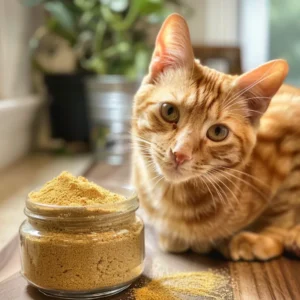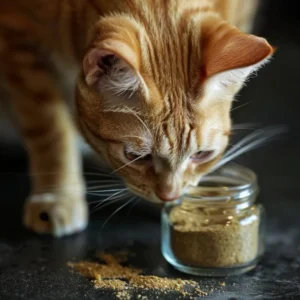Understanding Yeast Infections in Cats
Introduction
Yeast infections in cats are more common than one might think and can cause significant discomfort for our feline friends. Recognizing the symptoms and understanding the importance of timely treatment can help prevent more serious health issues. Yeast infections, particularly those caused by Candida and Malassezia, can affect various parts of a cat’s body, leading to skin and ear problems.
Types of Yeast Infections in Cats
Cats can suffer from several types of yeast infections, but the most prevalent are:
- Candidiasis: This is the most common yeast affecting cats, often seen in their mouth, nose, and ears but can spread to other areas.
- Malassezia: This yeast primarily causes skin and ear infections. Key things to watch for include:
- Itchiness
- Redness
- Greasy skin
- Foul odor
Symptoms and affected areas:
- Excessive scratching
- Swelling and redness in ears
- Dark, waxy discharge from ears
- Patches of hair loss, especially around the face and neck
Understanding Feline Skin and Coat Health provides a deeper look into how skin conditions affect cats and how to manage them.
Read More:
is nutritional yeast good for cats
nutritional yeast for cats
Causes of Yeast Infections in Cats
Several factors contribute to the development of yeast infections in cats:
- Immune System Deficiencies: Cats with weakened immune systems are more susceptible.
- Prolonged Antibiotic Use: Antibiotics can disrupt the natural flora of the body, leading to yeast overgrowth.
- Underlying Health Conditions: Conditions like diabetes can predispose cats to yeast infections.
- Environmental Factors: High humidity and warmth can promote yeast growth.
For more detailed information on how diet affects yeast growth in cats, Dietary Tips for Maintaining Your Cat’s Health offers great advice and food recommendations.
By understanding these causes, cat owners can better prevent and manage yeast infections, ensuring their pets remain happy and healthy.
Treatment and Prevention
Treatment Options for Yeast Infections
Effective management of yeast infections in cats involves a combination of medical treatments and careful monitoring. Here are the primary approaches:
- Antifungal Medications: Both topical and oral antifungal medications are commonly used to treat yeast infections. These include creams, ointments, and oral drugs.
- Topical treatments are applied directly to the affected area and are useful for localized infections.
- Oral treatments may be necessary for more severe or widespread infections.
- Importance of Veterinary Diagnosis and Monitoring:
- Accurate diagnosis is crucial, as treatments may vary depending on the specific type of yeast infection.
- Ongoing monitoring by a veterinarian ensures the treatment is effective and adjusts as needed.
- Home Remedies and Their Effectiveness:
- Some home remedies, such as apple cider vinegar or coconut oil, can be helpful, but they should never replace professional veterinary care.
- Veterinary Insights on Feline Diseases offers more information on when to consider home remedies and when to seek professional help.
Preventing Yeast Infections in Cats
Prevention of yeast infections involves dietary management, proper hygiene, and regular veterinary care:
- Dietary Considerations:
- Feeding cats foods that help maintain a healthy gut flora reduces yeast growth.
- Probiotics and foods low in sugar and yeast can be beneficial.
- Hygiene Practices:
- Regular cleaning of your cat’s living environment and grooming helps prevent infections.
- Pay special attention to keeping your cat’s ears clean, especially in breeds with folded ears.
- Regular Veterinary Check-ups:
- Routine check-ups can catch early signs of yeast infections and prevent them from worsening.
For detailed dietary recommendations, check out Dietary Tips for Maintaining Your Cat’s Health.
FAQs
- What are the signs of a yeast infection in a cat?
- Look for itchy skin, redness, unusual odor, and discharge from ears or skin folds.
- Can yeast infections in cats be cured?
- Yes, with proper treatment, most yeast infections can be effectively managed and resolved.
- How can I prevent my cat from getting a yeast infection?
- Maintain good hygiene, provide a balanced diet, and ensure regular veterinary visits.
- Are there any home treatments for yeast infections in cats?
- While some home treatments can provide relief, they should only be used under veterinary guidance to ensure safety and effectiveness.
Conclusion
Managing and preventing yeast infections in cats requires a combination of proper care, timely medical intervention, and preventive measures. By understanding the causes, treatment options, and preventive strategies, cat owners can help ensure their pets lead comfortable and healthy lives. Regular veterinary care is crucial in managing these infections effectively and should never be overlooked.
By following these guidelines, you can help keep your cat healthy and free from the discomfort of yeast infections. For more insights on maintaining your cat’s skin health, Understanding Feline Skin and Coat Health provides additional valuable information.





